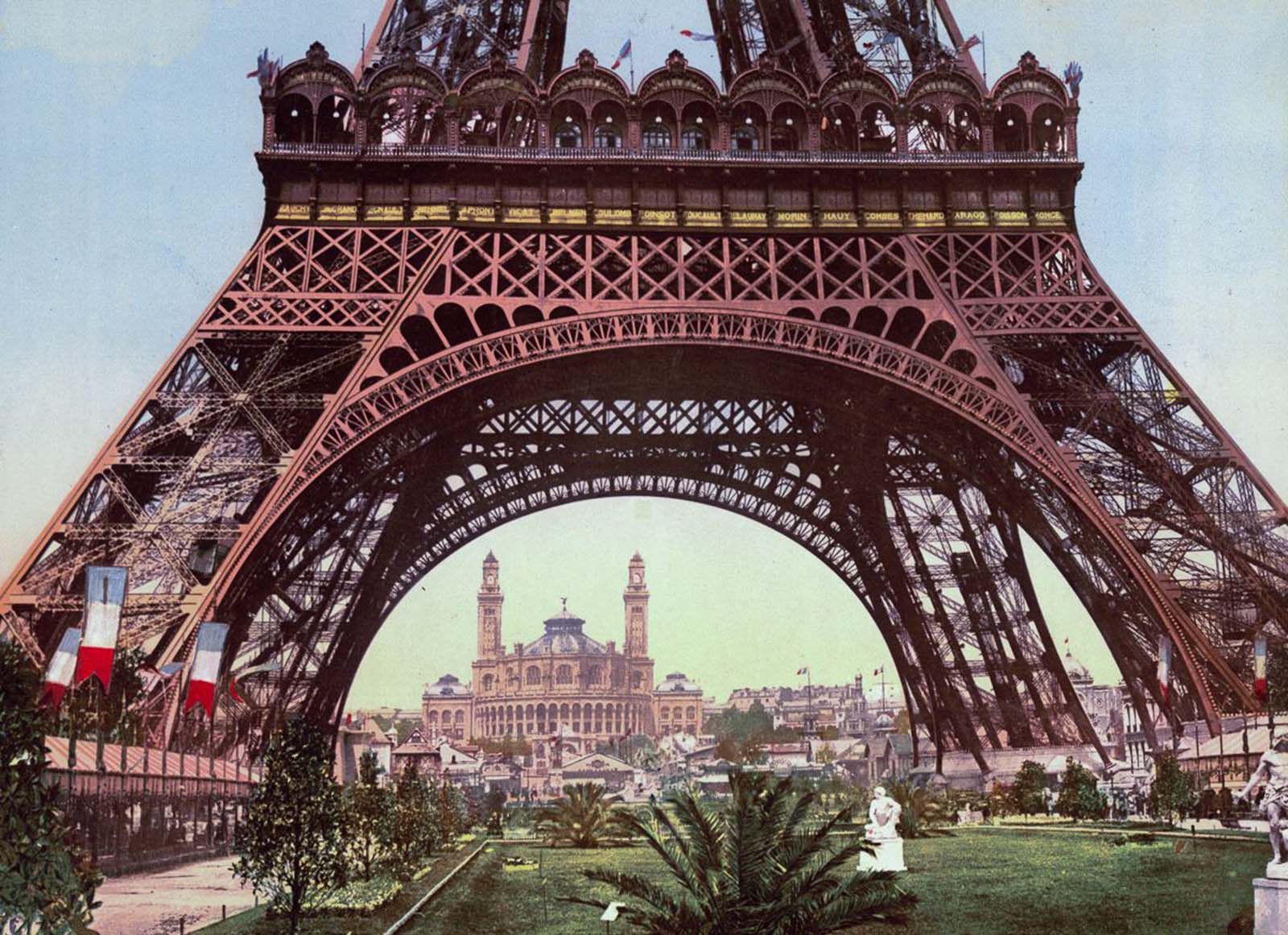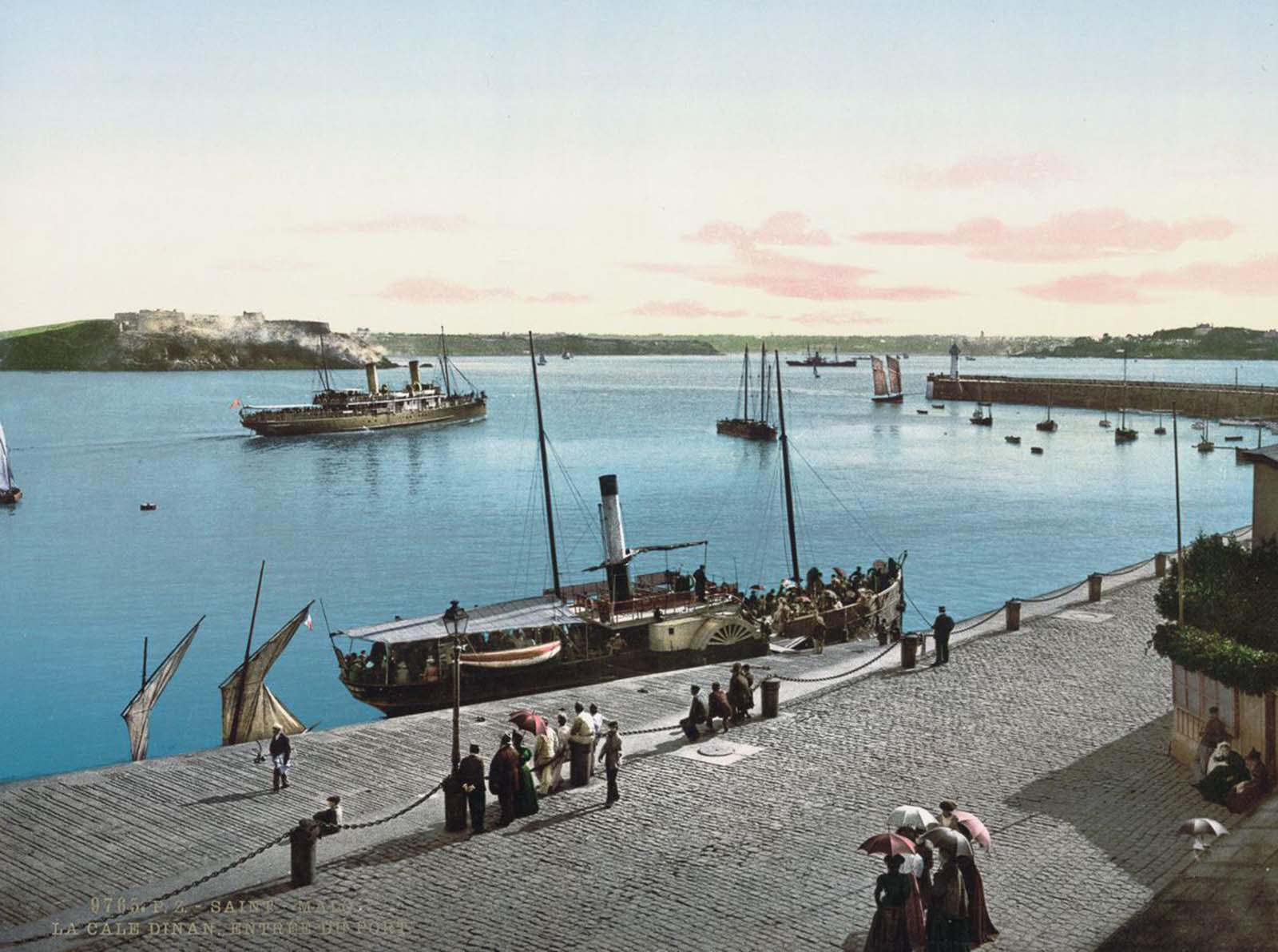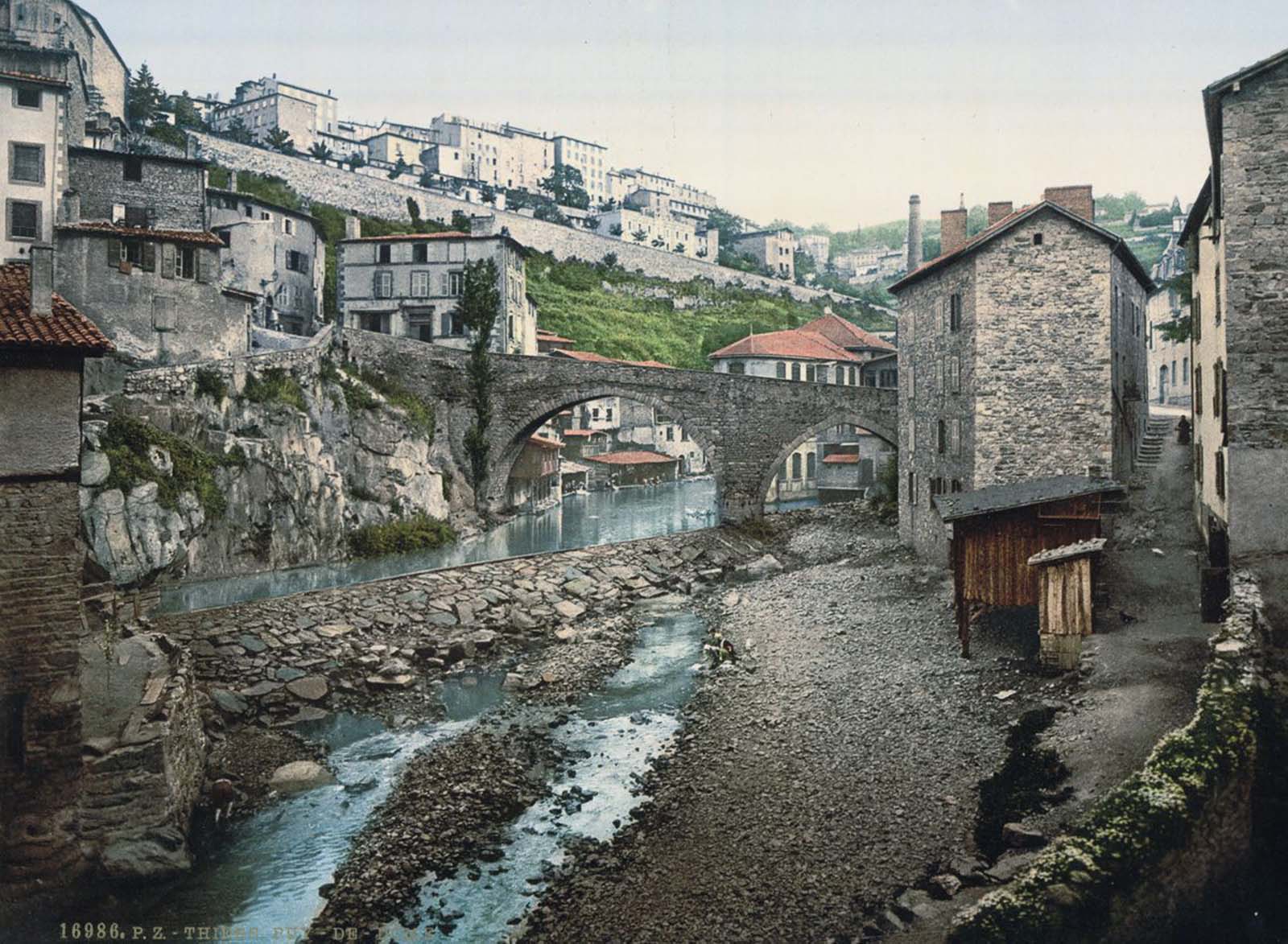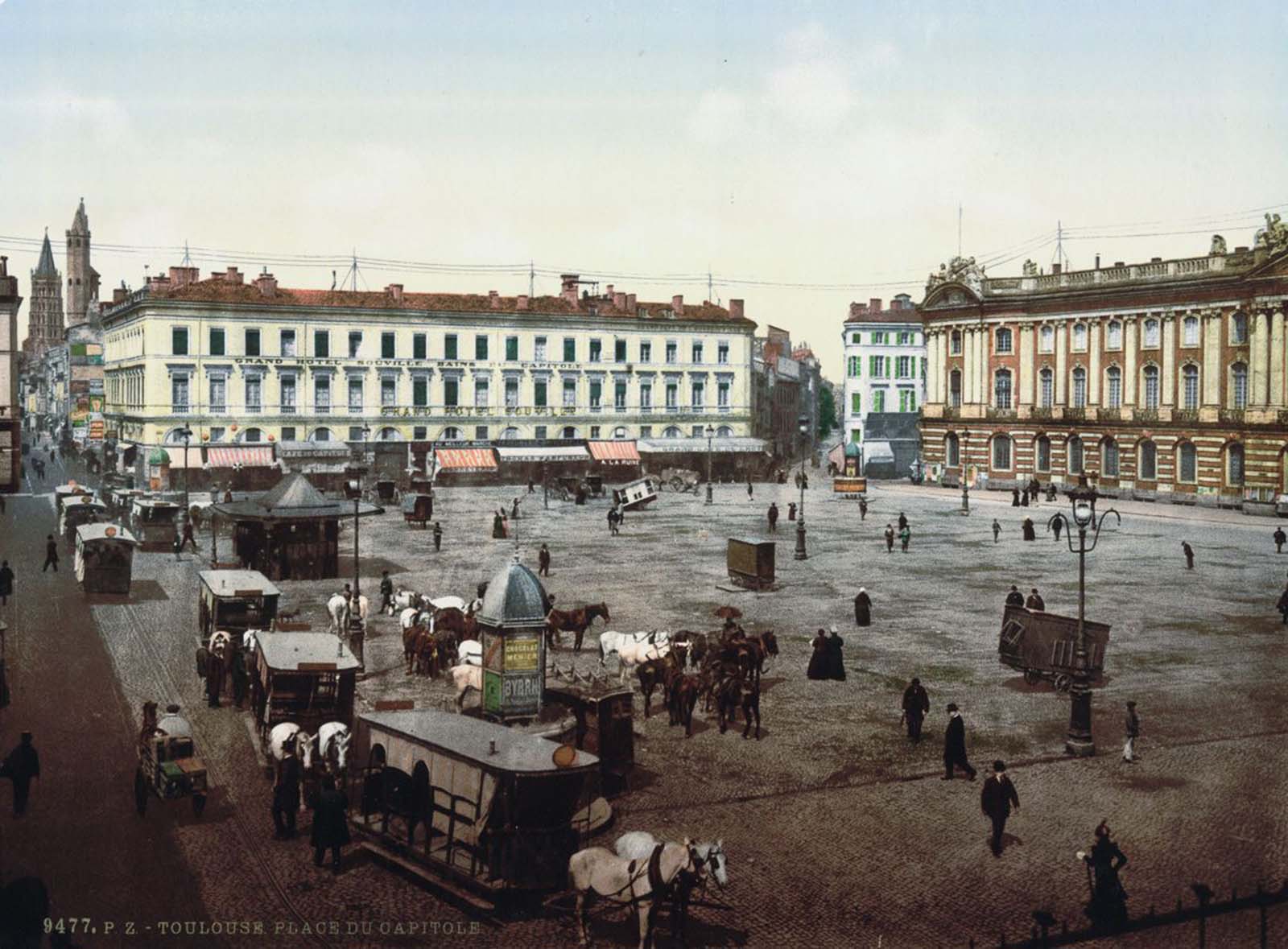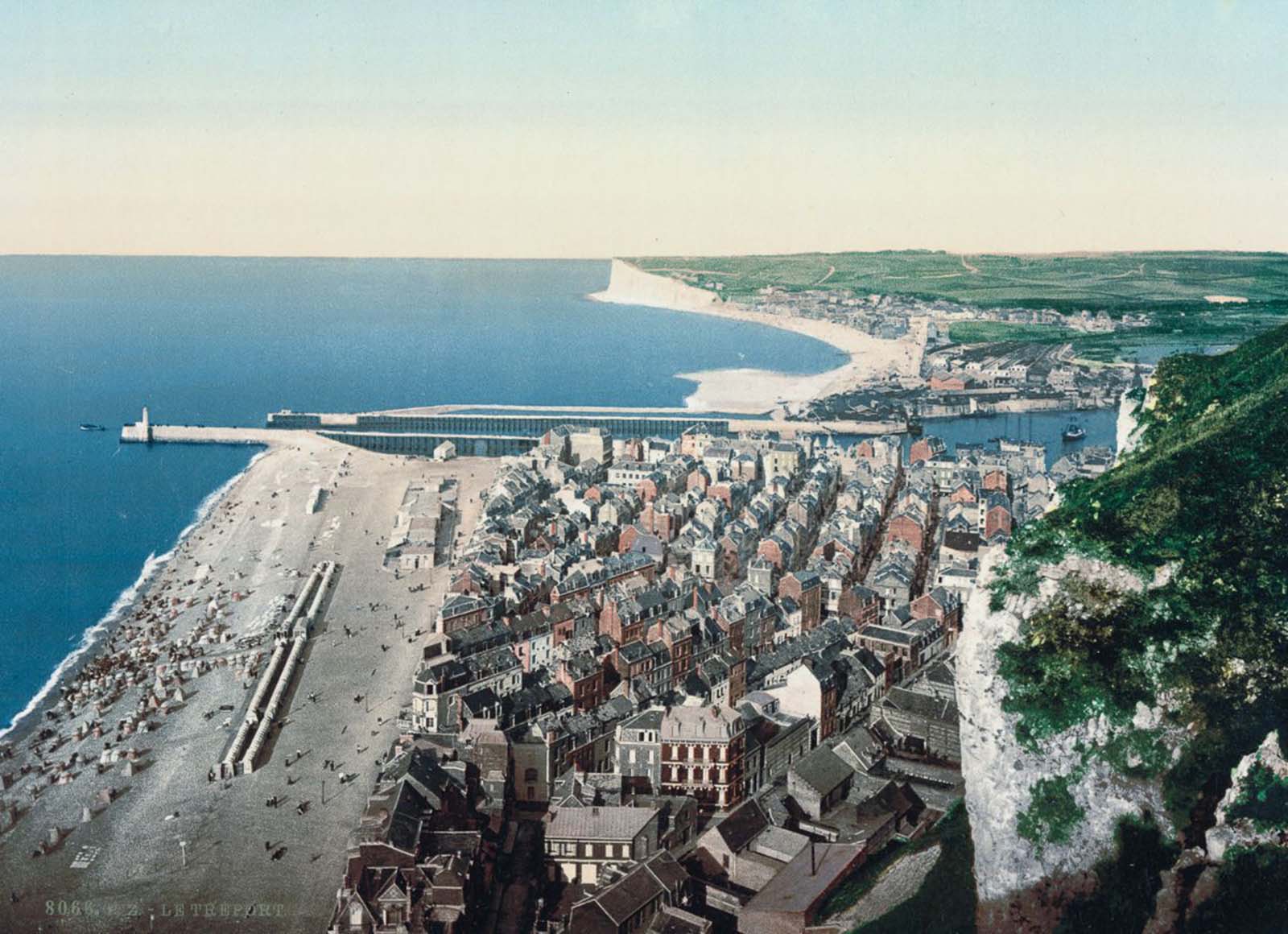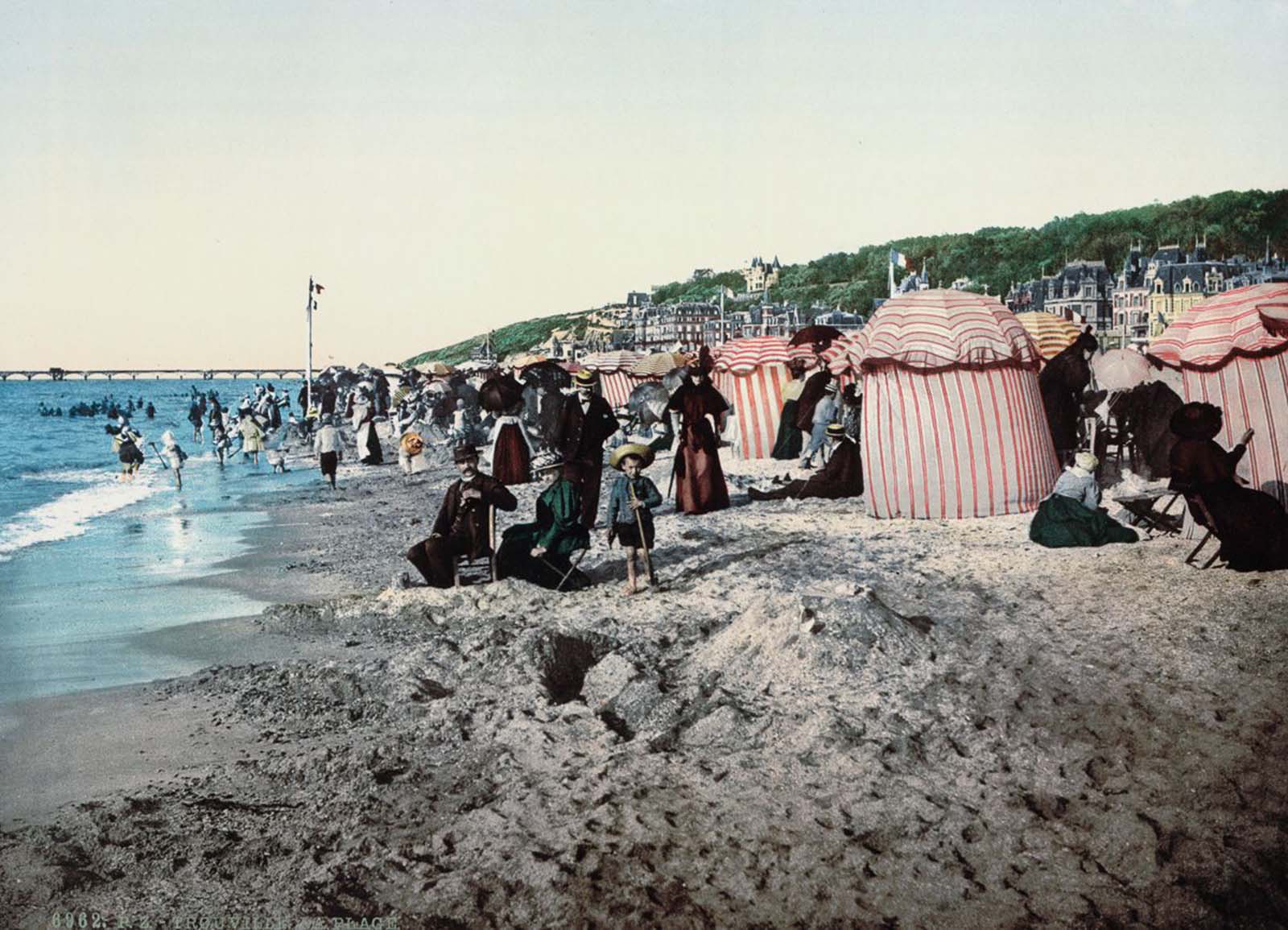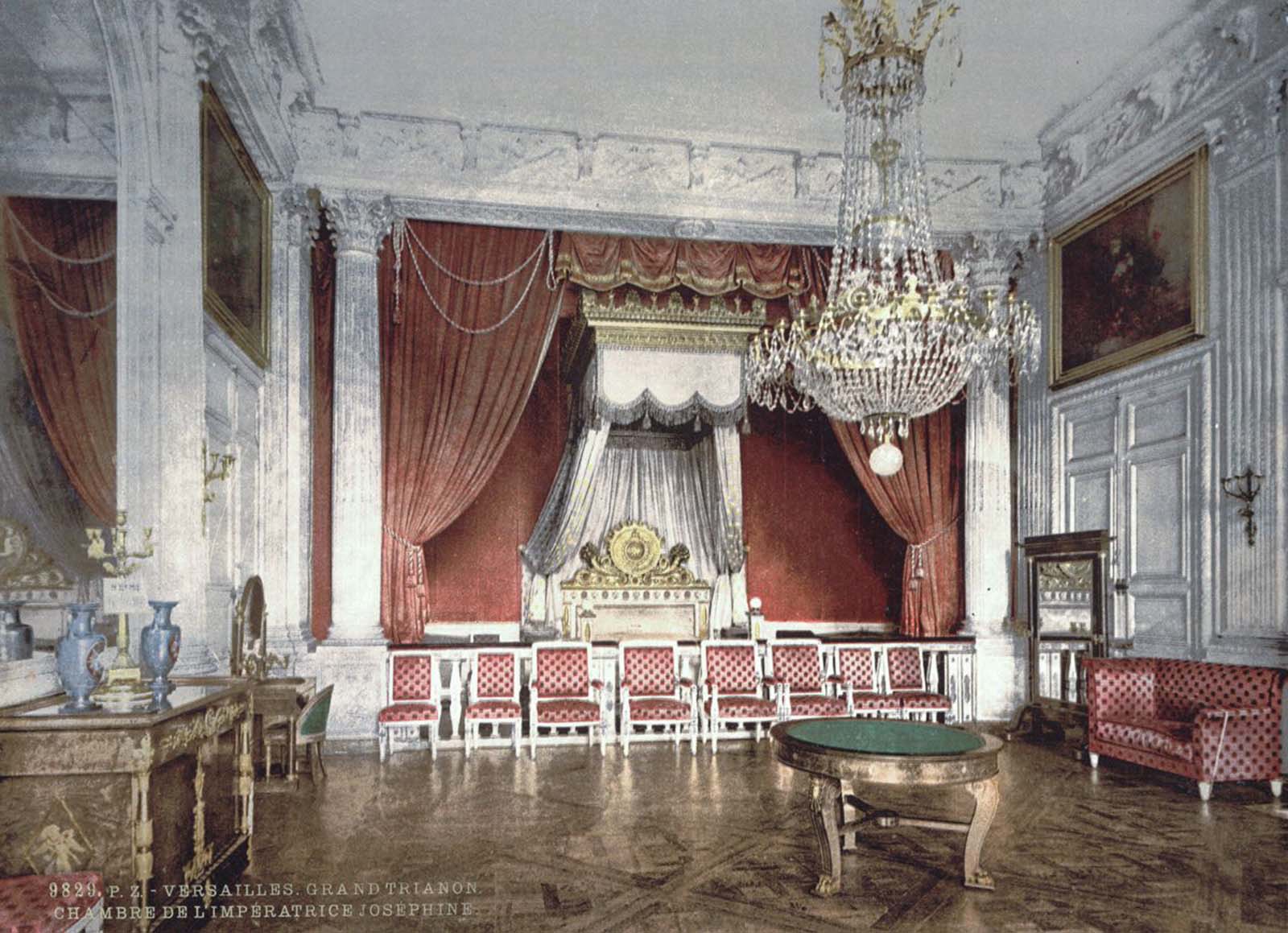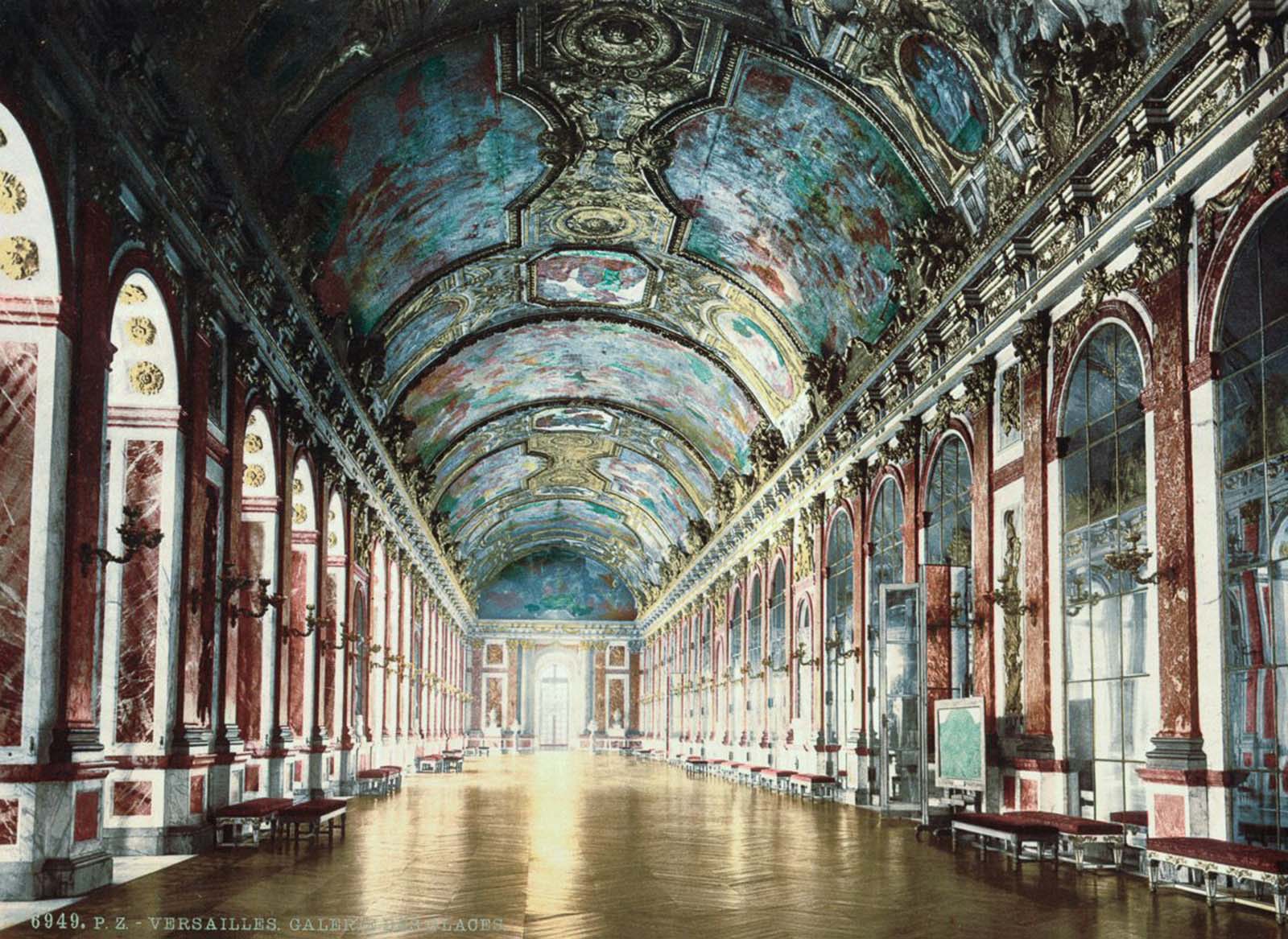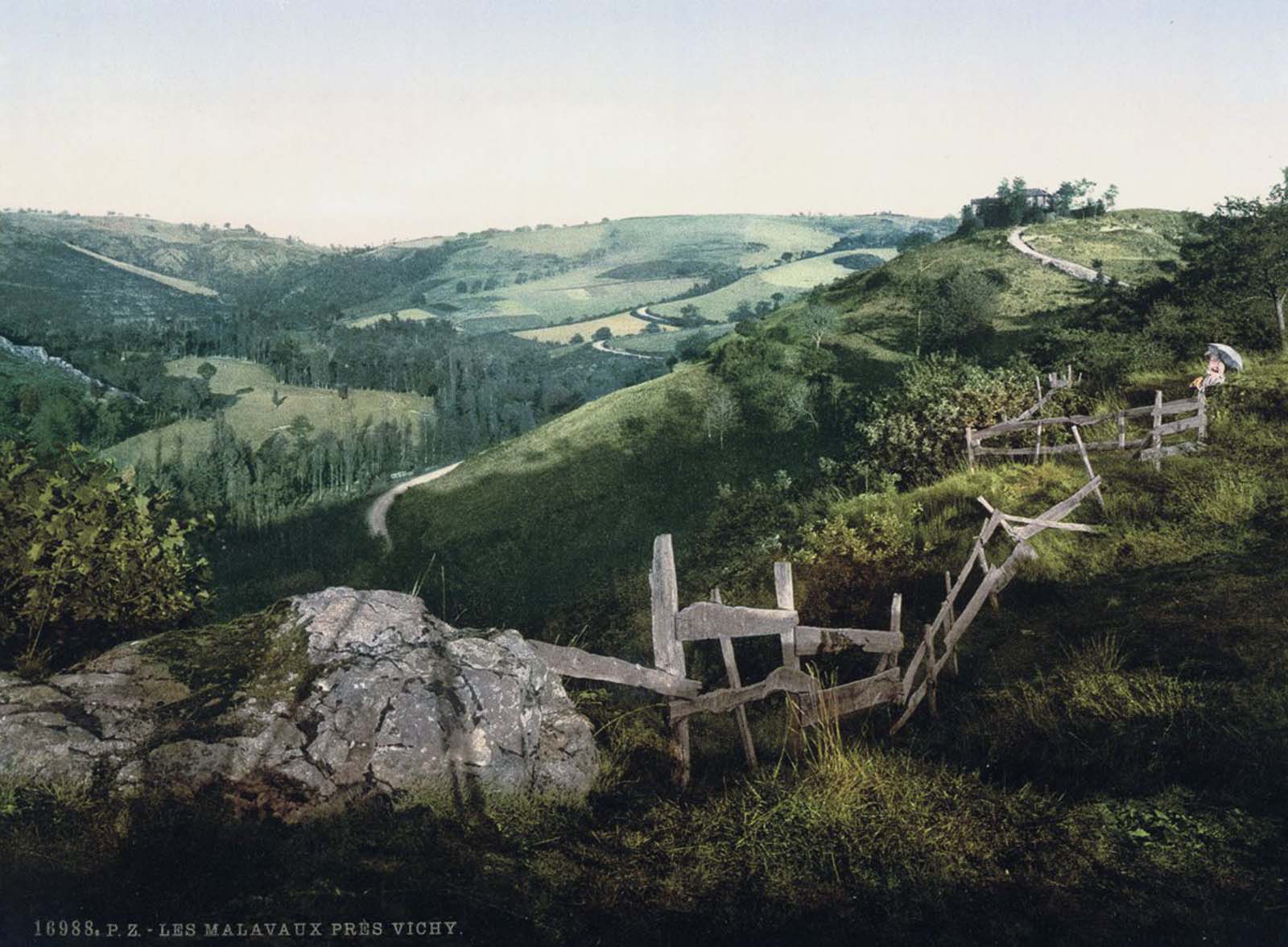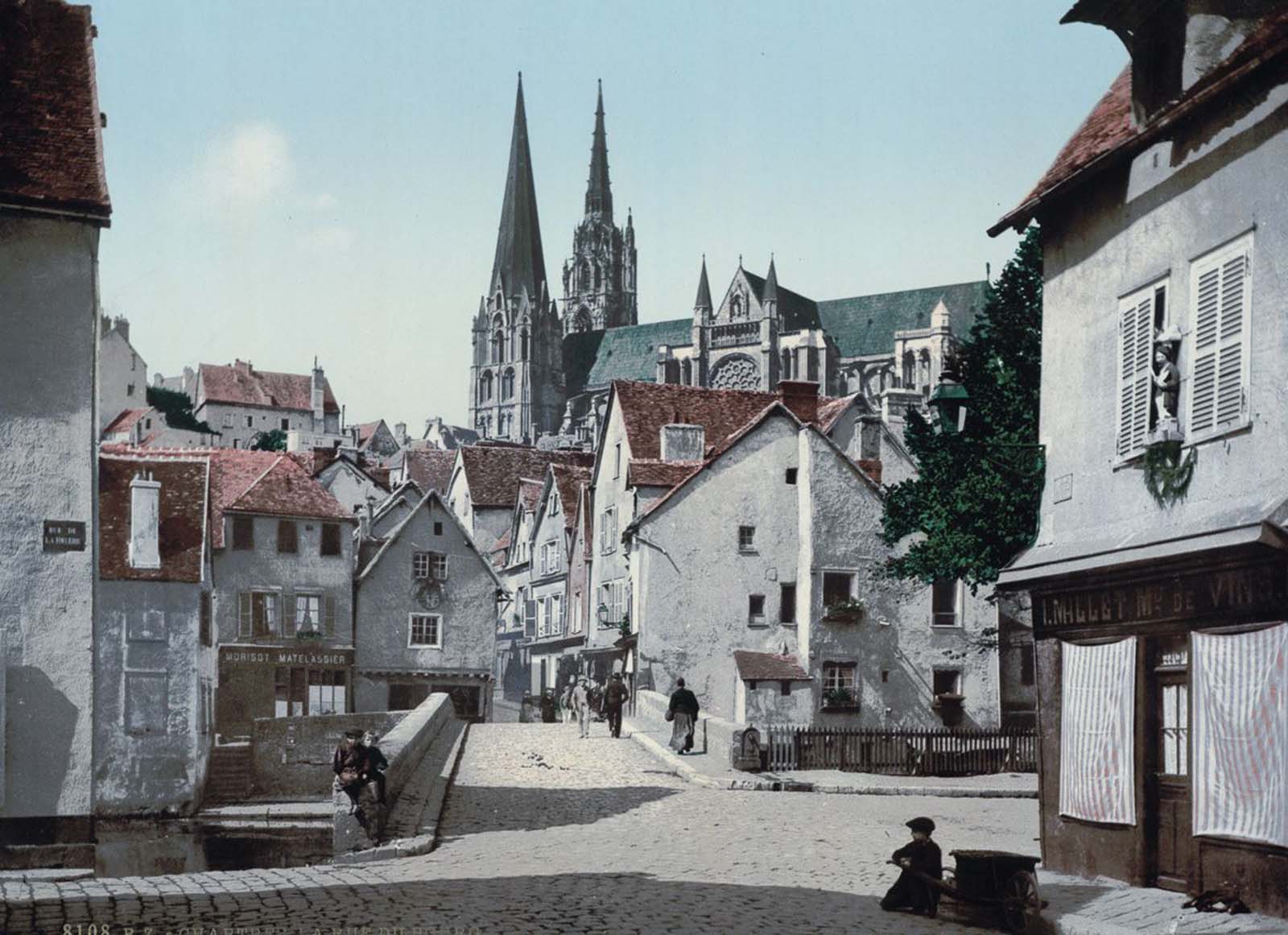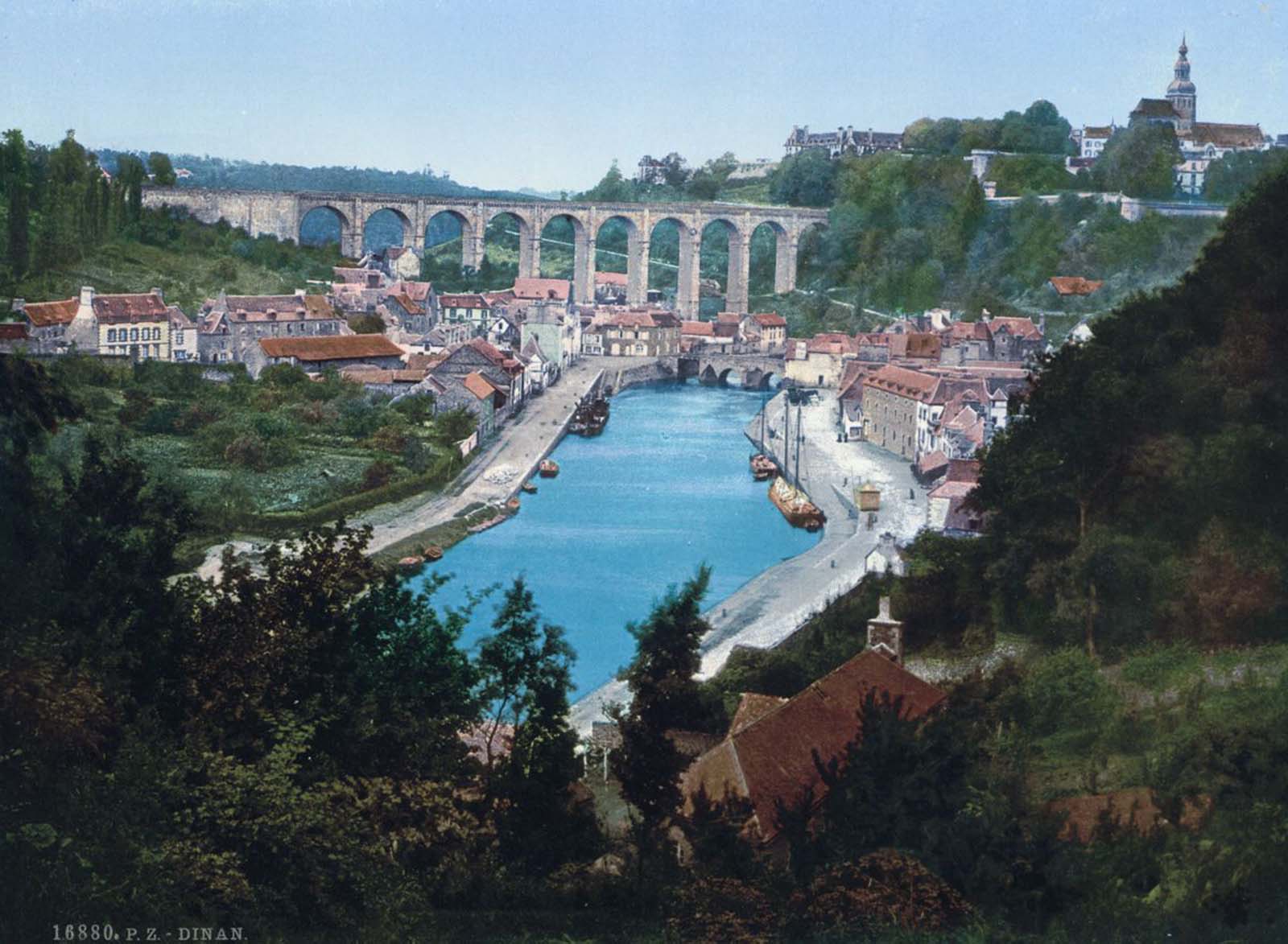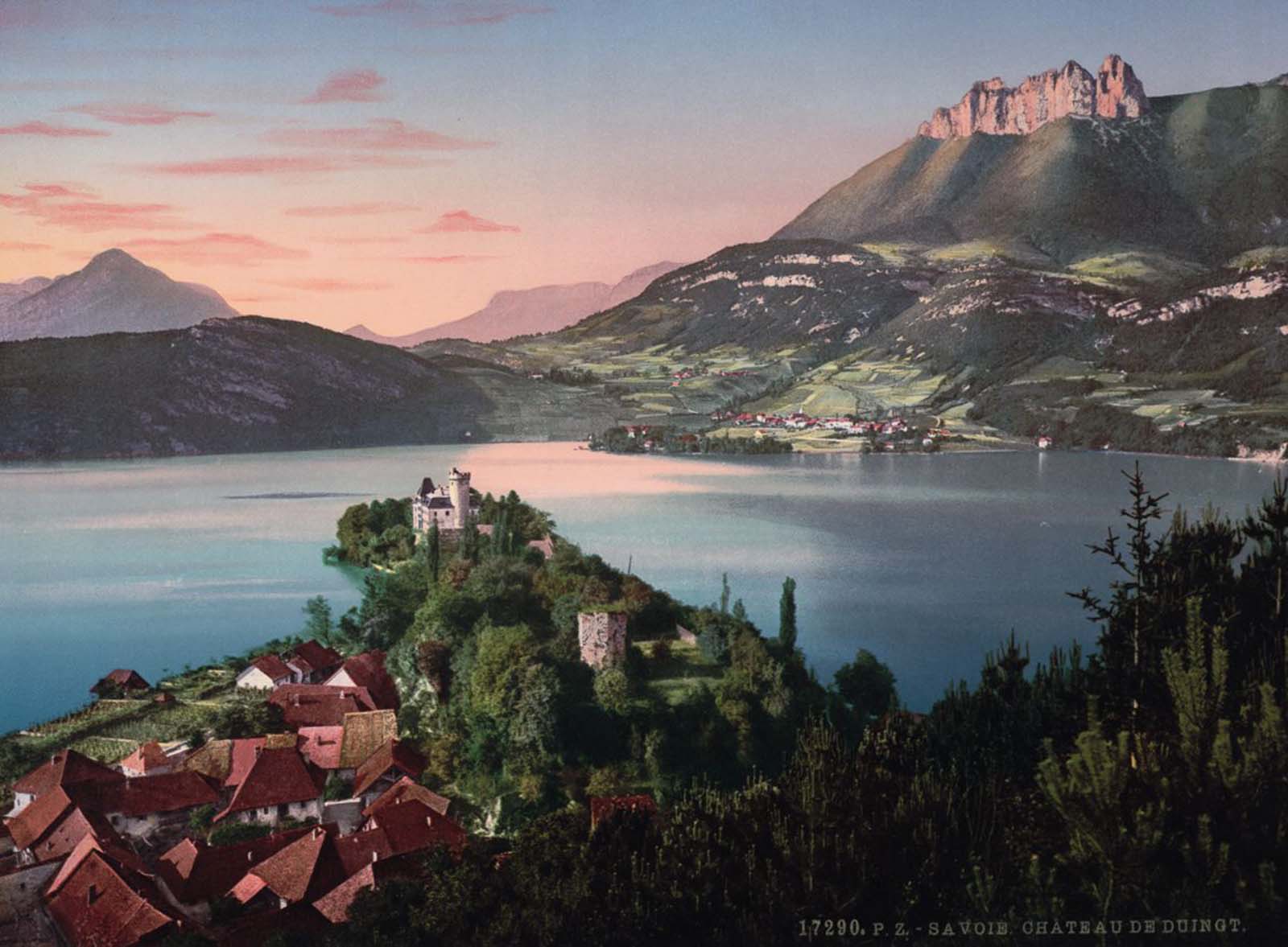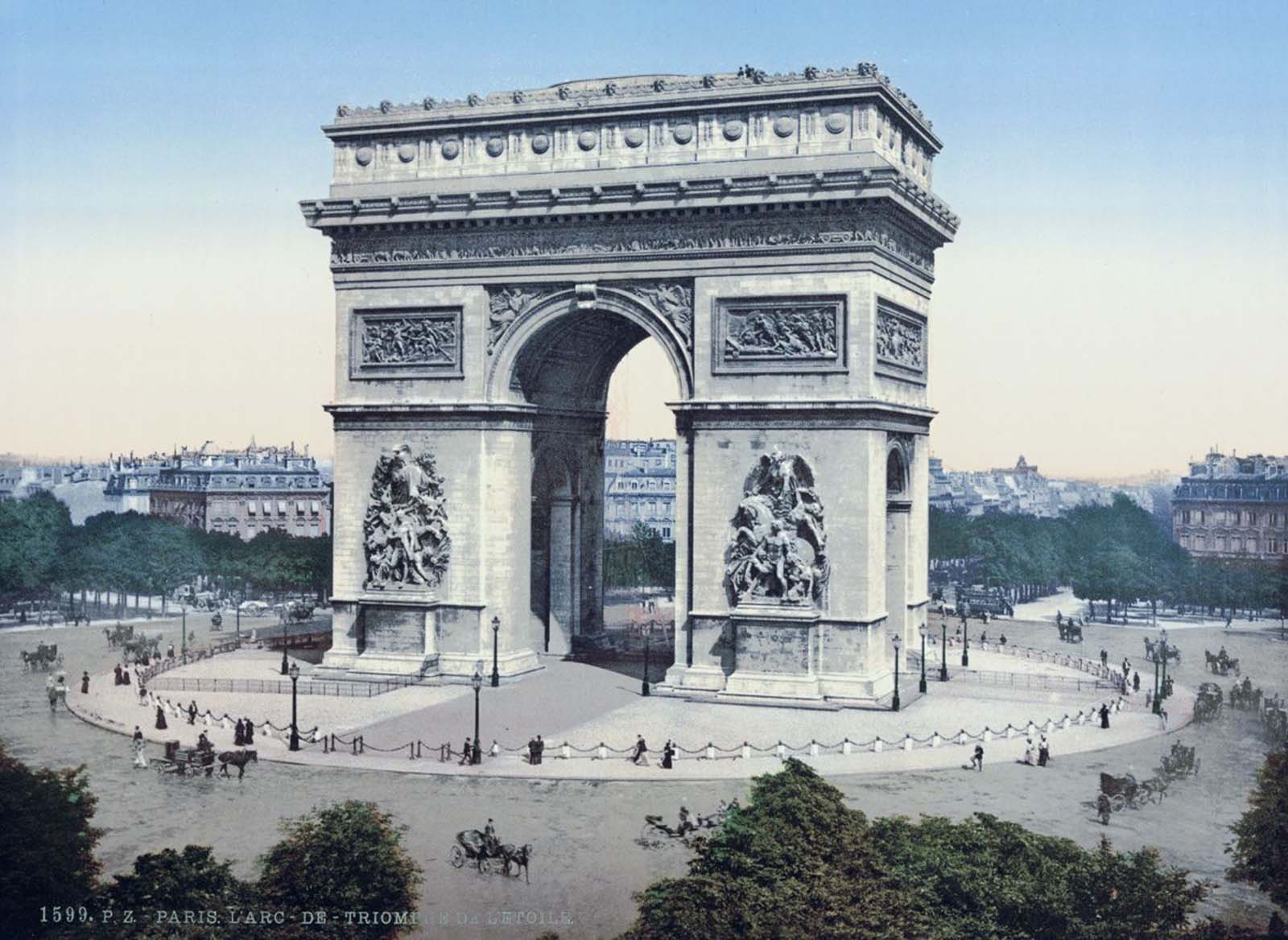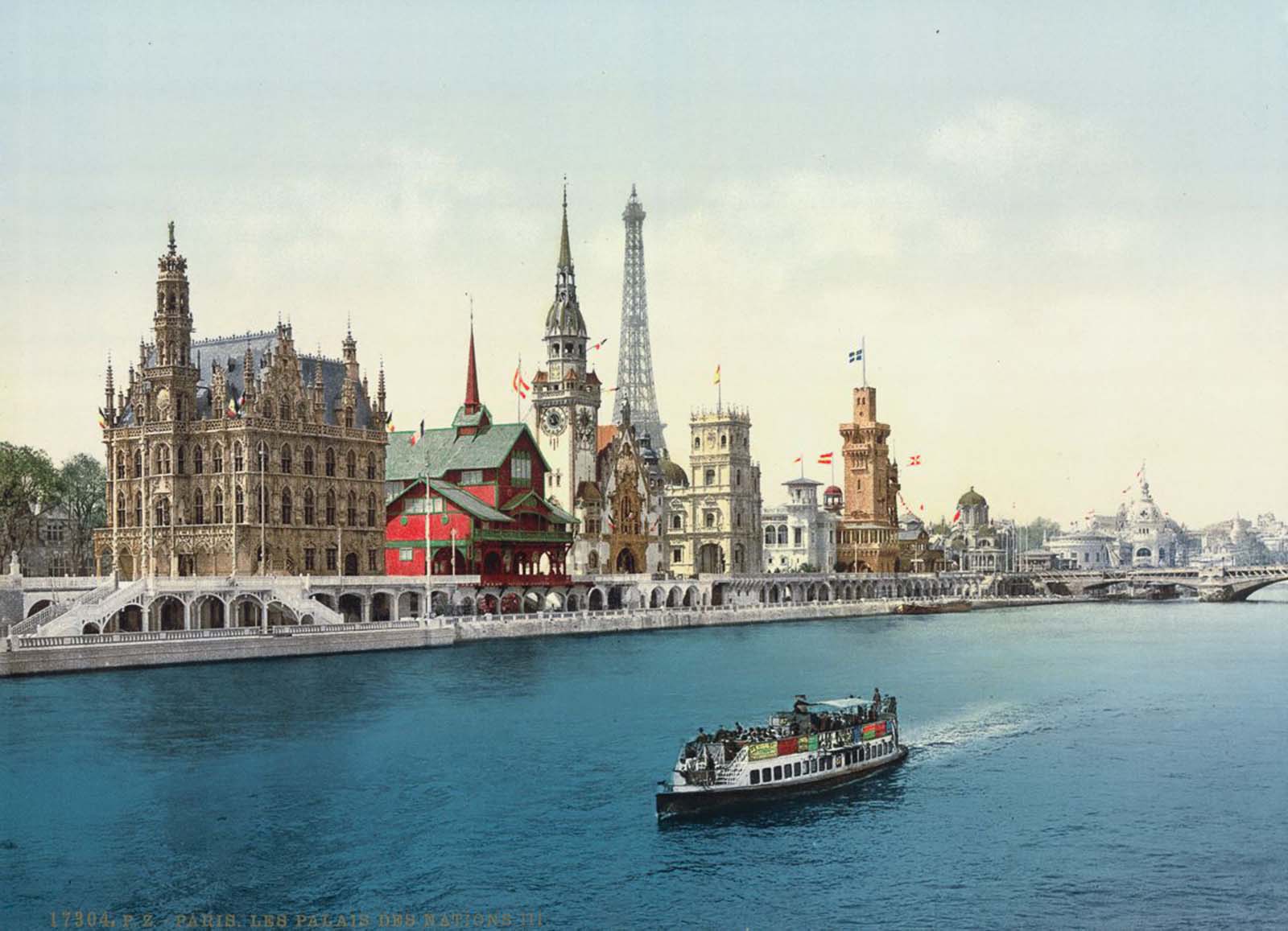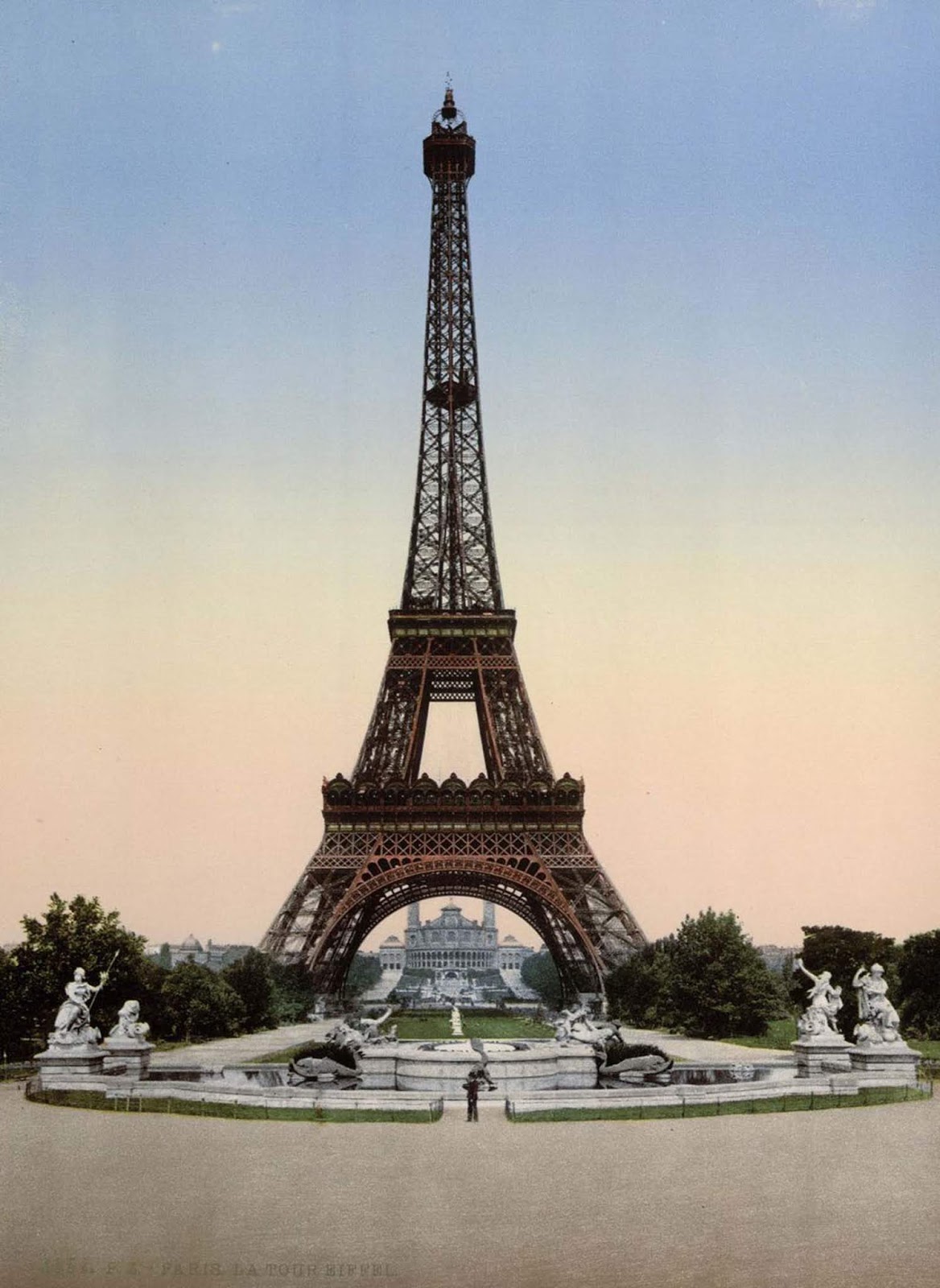The photochrom process was invented in the 1880s by Hans Jakob Schmid, an employee of the Swiss company Orell Gessner Füssli—a printing firm whose history began in the 16th century. Füssli founded the stock company Photochrom Zürich as the business vehicle for the commercial exploitation of the process. From the mid-1890s the process was licensed by other companies, including the Detroit Photographic Company in the US (making it the basis of their “phostint” process), and the Photochrom Company of London. The photochrom process was most popular in the 1890s, when true color photography was first developed but was still commercially impractical. In 1898 the US Congress passed the Private Mailing Card Act which let private publishers produce postcards. These could be mailed for one cent each, while the letter rate was two cents. Publishers in the US (and later all over the world) created thousands of photochrom prints, usually of cities or landscapes, and sold them as postcards. In this format, photochrom reproductions became popular. The Photochrom process began with coating a tablet of lithographic limestone with a light-sensitive emulsion and exposing it to sunlight under a photo negative for several hours. The emulsion would then harden in proportion to the tones of the negative, resulting in a fixed lithographic image on the tablet. Further litho stones would then be prepared for each tint to be used in the final color postcard — a single image could require well over a dozen different stones. Though a time-consuming and delicate endeavor, the Photochrom process resulted in color images with a rare degree of verisimilitude, especially at a time when true color photography was still in its infancy. (Photo credit: Library of Congress). Notify me of new posts by email.
Δ Subscribe
